Ovens are an important part of many kitchens, and most consumers don’t skimp on details when choosing one. However, they may not know that ovens come in two types: conventional and convection. Although these appliances look similar at first glance, they offer many differences in performance, functionality, and results.
In fact, the differences are significant enough to impact the user’s cooking experience. But don’t worry. This guide will offer an in-depth look at these oven choices, comparing them to help retailers decide which to offer their buyers in 2025.
Table of Contents
What are conventional ovens?
What are convection ovens?
Conventional vs. convection ovens: What are the differences?
Which one is best for consumers?
The bottom line
What are conventional ovens?
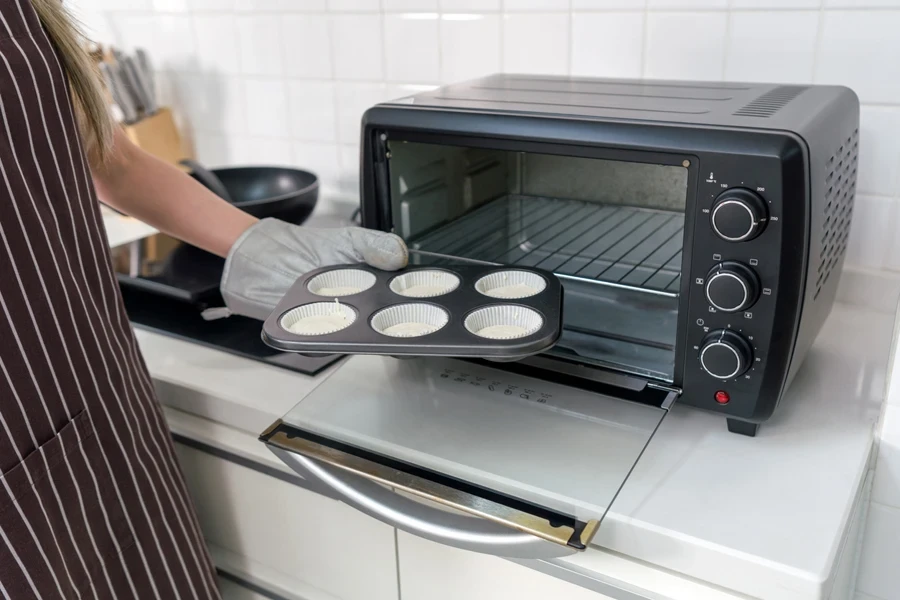
Most people use conventional ovens in the average kitchen. That’s why they have the name “conventional,” as these ovens are the standard. Conventional ovens have two heating elements (one at the top and the other at the bottom) to create hot air.
It’s a simple and reliable way to handle many cooking tasks. However, conventional ovens have a catch: They tend to have uneven heat. For instance, the top may be hotter than the bottom.
Key specifications
- Average preheat time: A conventional oven takes about 10-15 minutes to reach 350oF.
- Baking time: Foods like cookies take 10 to 12 minutes per batch.
- Temperature range: The oven’s max temperature typically ranges from 200oF to 500oF (depending on the brand).
- Heat source: Conventional ovens use stationary heating elements at the top and bottom.
- Energy consumption: These ovens consume approximately 2.3 kWh for an hour at 350oF.
Kitchen performance
Conventional ovens are great for dishes that require direct heat. They can cook casseroles, simple cakes, and other recipes that don’t need browning or crisping perfectly. However, consumers may need to adjust their pans to avoid uneven cooking.
What are convection ovens?
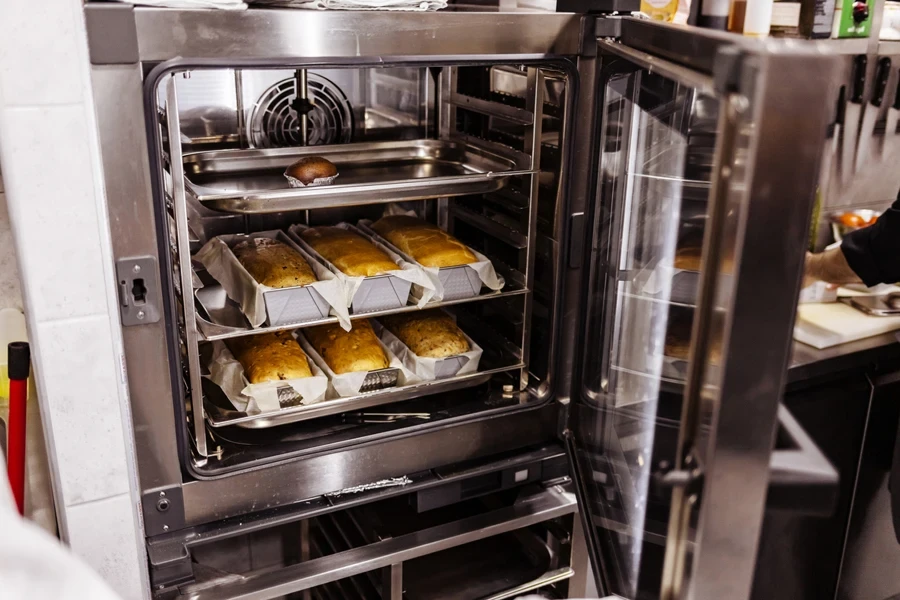
The convection oven adds a fan and exhaust system to the conventional model’s basic design, giving it something like a third heating element. This change enhances the experience and addresses the flaws. For instance, the fan ensures the hot air surrounds the food, promoting even cooking. In addition to creating consistent temperatures, the airflow also reduces the cooking time—take a look at the specs below:
Key specifications
- Average preheat times: A convection oven takes 6-10 minutes to reach 350oF.
- Baking time: Foods like cookies take 7-9 minutes per batch (25% faster than conventional ovens).
- Temperature range: This spec is similar to conventional ovens, ranging from 200 to 500 degrees. However, some models can go higher for broiling.
- Heat source: These ovens have stationery heating elements and a fan for circulation.
- Energy consumption: Convection ovens use approximately 1.8 kWh for an hour at 350oF.
Performance in the kitchen
True convection ovens are way more versatile than conventional models. Their even heat distribution easily handles baked foods (like macarons), flaky pastries, and evenly roasted meats. Even better, convection ovens are incredibly efficient—they reduce cooking times and energy consumption while offering amazing (and professional-looking) browning and crisping.
Conventional vs. convection ovens: What are the differences?
1. Heat distribution
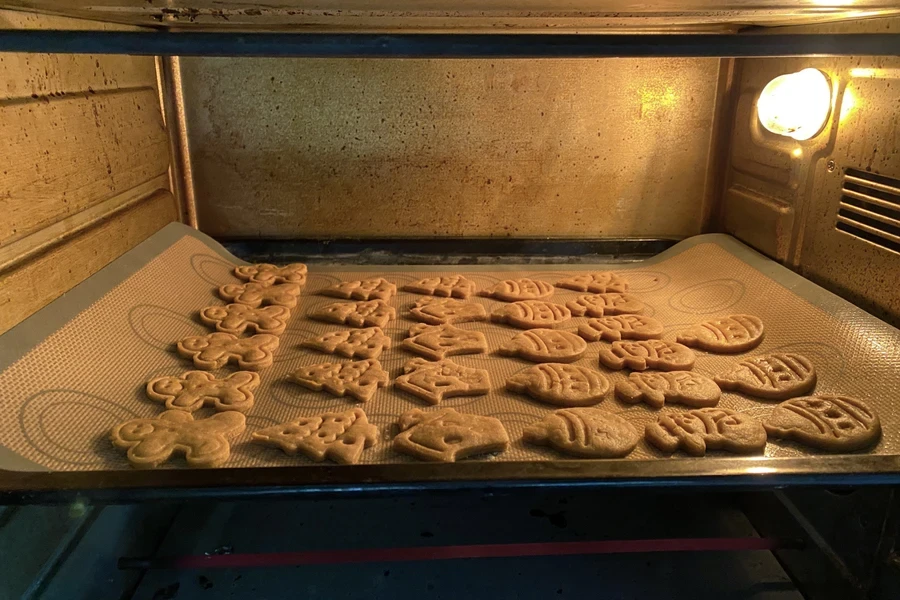
Conventional ovens ensure heat rises naturally when cooking. But this creates hotter zones near the top, meaning some areas will receive more direct heat than others. For this reason, food may cook unevenly unless consumers flip or adjust the food.
On the other hand, convection ovens use fans to circulate all the heat, leaving zero room for uneven temperature. For example, consumers can cook a pie evenly across its entire surface without rotating it.
Real-life impact: If consumers bake a batch of cookies in a conventional oven, they may get uneven browning as the bottom side will cook slower than the top. But they won’t have such issues with a convection oven, as everything will bake uniformly.
2. Cooking speed
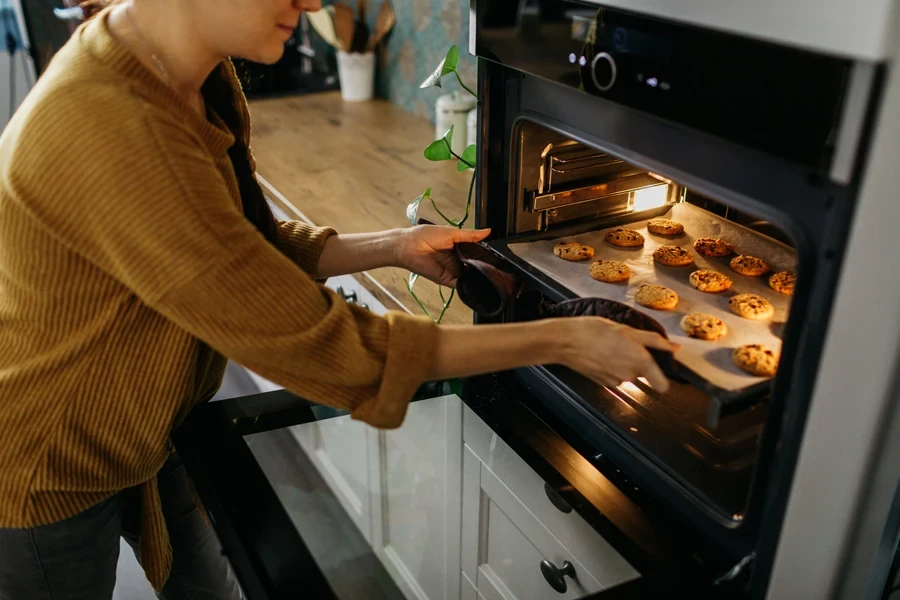
Conventional ovens often have longer cooking times because they rely on static heat. A roasted chicken may take 1 hour and 20 minutes to cook properly at 375oF. In contrast, convection ovens have a constant airflow that offer faster cooking times.
This better airflow usually reduces cooking times by 25 to 30%. The same roasted chicken in a convection oven may only take 55 to 60 minutes. Hence, consumers looking for quick turnaround times are more likely to choose convection ovens.
3. Baking and browning
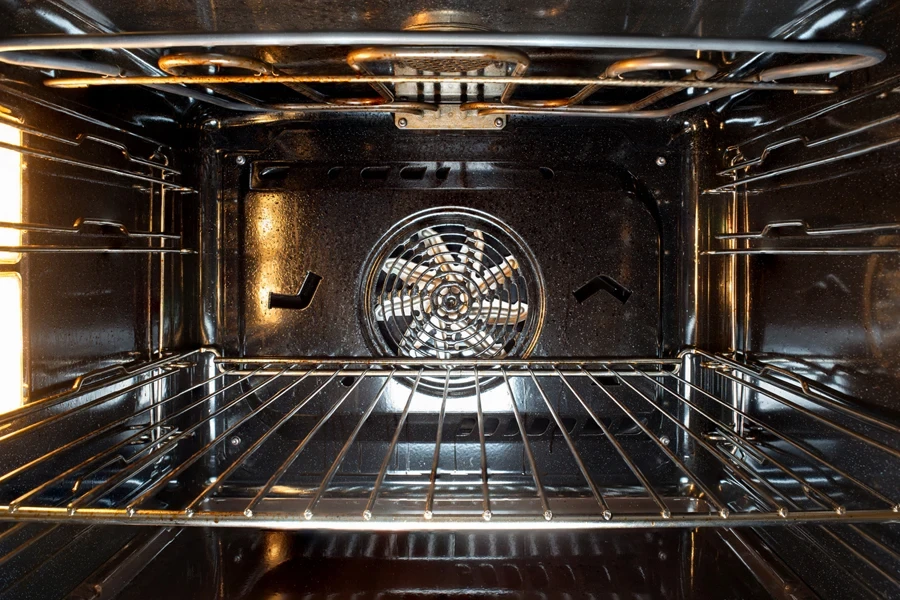
As mentioned earlier, conventional ovens are limited in producing consistent browning. Using the same cookie example, if consumers bake multiple trays, one may be perfectly golden while another may be pale or overdone.
On the other hand, convection ovens are excellent for achieving perfect browning and crisping. The circulating heat is much better at caramelizing different food surfaces. For this reason, a tray of roasted vegetables in a convection oven will have that delicious golden-brown exterior after 25 minutes, while the same tray in a conventional model might need 35 minutes (and may still be uneven).
Pro tip: Consumers who care more about presentation and flavor enhancements will love the superior results of convection ovens.
4. Versatility
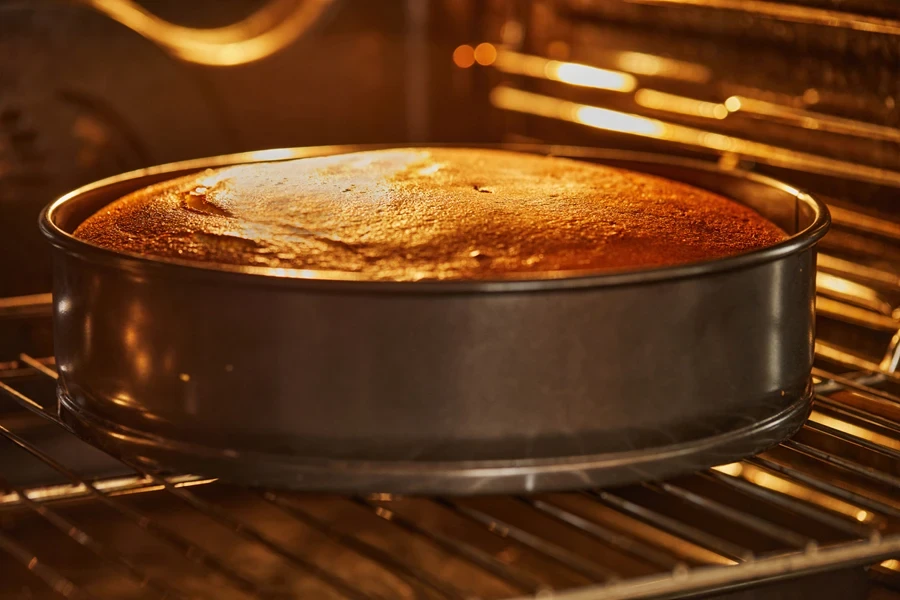
Since conventional ovens are the standard in most kitchens, they are perfect for basic cooking tasks. However, they may struggle with multi-level baking or precise recipes. Meanwhile, convection ovens have more versatility, as they can handle everything from roasting large meat cust to delicate pastry baking.
So, while a conventional oven might bake a cake well enough, a convection oven will offer a better experience for more challenging recipes like soufflés or puff pastries, which demand consistent heat.
5. Noise levels
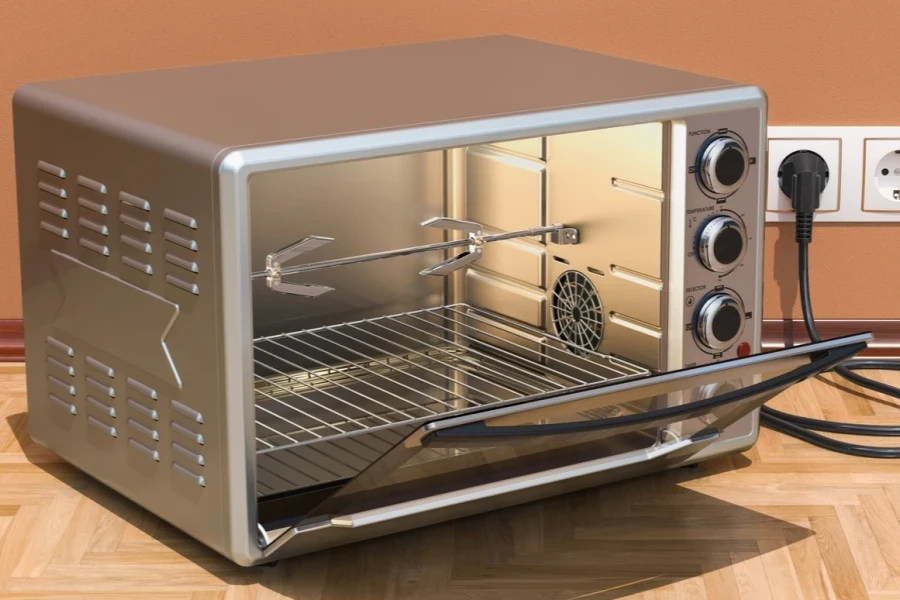
Conventional ovens are silent. They don’t have any fans or moving parts, so consumers don’t have to worry about noisy operations. In contrast, convection ovens have fans that produce noise around 30 to 50 dB (similar to a refrigerator), but it depends on the model.
Pro tip: If consumers have a quiet kitchen and are worried about fan noise, let them know that while convection ovens may be noticeable, it’s not overwhelming.
6. Learning curve
Everyone is used to conventional ovens. These ovens are straightforward, so consumers won’t need to adjust when using different recipes. However, convection ovens may need some adapting if users want the best experience. They may need to learn to lower temperatures and monitor cooking times more closely to prevent overcooking.
Which one is best for consumers?
Choosing between a conventional and a convection oven depends on what consumers need.
Consumers will go with a conventional oven if:
- They’re on a budget, as conventional ovens are more affordable upfront.
- They like to keep things simple. Consumers won’t need to adjust recipes or learn new settings.
- They don’t mind a little extra cooking time or rotating pans.
Consumers will go with a convection oven if:
- They love baking. After all, pastries, cookies, and bread all come out better in a convection oven.
- They’re busy. Convection ovens offer faster cook times and even results, which makes life easier.
- They’re ready to adjust recipes and embrace a little noise for better performance.
The bottom line
Both conventional and convection ovens have their place in the kitchen. A conventional oven is perfect for consumers looking for an affordable, straightforward option for basic cooking. On the other hand, a convection oven offers faster, more even results and is a fantastic choice if users bake or roast frequently.
The best oven for consumers fits their needs, cooking style, and budget. Remember to consider what matters the most to your target consumers, and you will be sure to make the right call.





 Afrikaans
Afrikaans አማርኛ
አማርኛ العربية
العربية বাংলা
বাংলা Nederlands
Nederlands English
English Français
Français Deutsch
Deutsch हिन्दी
हिन्दी Bahasa Indonesia
Bahasa Indonesia Italiano
Italiano 日本語
日本語 한국어
한국어 Bahasa Melayu
Bahasa Melayu മലയാളം
മലയാളം پښتو
پښتو فارسی
فارسی Polski
Polski Português
Português Русский
Русский Español
Español Kiswahili
Kiswahili ไทย
ไทย Türkçe
Türkçe اردو
اردو Tiếng Việt
Tiếng Việt isiXhosa
isiXhosa Zulu
Zulu